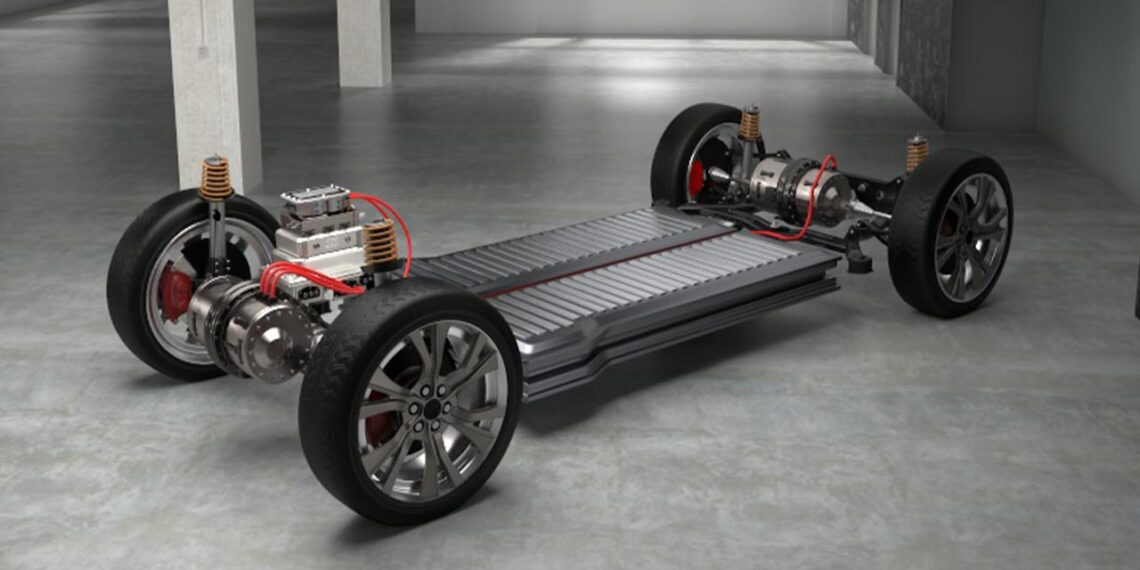In the quest for sustainable and efficient transportation, electric vehicles (EVs) have emerged as a key solution. At the heart of these innovative vehicles lies the automotive electric drive, a complex system comprising motors, accumulators, and gear drives that propel the EV forward. The modeling of automotive electric drives has played a pivotal role in shaping the past, present, and future of electric mobility.
A Historical Perspective
The development of automotive electric drives has a rich history that spans several decades. The first electric cars emerged in the late 19th century, and their powertrain designs laid the foundation for early electric drive modeling. However, due to technological limitations and the rise of internal combustion engines, electric vehicles took a backseat for much of the 20th century.
Fast forward to recent years, advancements in battery technology, electric motor design, and power electronics have revitalized the electric vehicle industry. This resurgence has propelled automotive electric drive modeling to the forefront, allowing engineers to optimize power transmission and improve the efficiency of electric vehicles.
Challenges in Automotive Electric Drive Modeling
Modeling automotive electric drives comes with its fair share of challenges. One primary obstacle lies in accurately predicting the dynamic behavior and interactions among various components within the powertrain. Electric motors, accumulators, and gear drives must be intricately modeled to ensure compatibility, optimal performance, and efficiency. Real-world driving conditions, road surfaces, and driver behavior must also be incorporated into the models, adding complexity to the process.
Furthermore, as the electric mobility landscape evolves, staying abreast of technological advancements poses an ongoing challenge. Concepts such as electric, connected, autonomous, and shared mobility are transforming the industry, demanding constant innovation in automotive electric drive modeling. Overcoming these challenges requires collaboration, continuous research and development, and a deep understanding of emerging technologies.
Opportunities in Automotive Electric Drive Modeling
Amidst the challenges lie vast opportunities for advancement in automotive electric drive modeling. By employing sophisticated modeling and optimization techniques, engineers can enhance the stability and performance of EV powertrains. Optimizing components based on vehicle dynamics, drive type, and efficiency regions results in increased range, improved energy prediction, and superior power transmission.
The rise of simulation tools and software has empowered engineers to create comprehensive models that replicate real-world conditions. Through virtual testing and analysis, they can fine-tune electric drives and explore innovative design configurations. Machine learning and artificial intelligence algorithms further augment the modeling process, enabling engineers to analyze large datasets, predict outcomes, and identify optimal solutions.
The Present and Future of Automotive Electric Drive Modeling
In the present landscape, automotive electric drive modeling is instrumental in driving the widespread adoption of electric mobility. Industry players are investing heavily in research and development to refine modeling techniques and improve EV performance. Collaborations between automakers, technology companies, and research institutions foster knowledge sharing, resulting in standardized modeling frameworks and faster innovation cycles.
Looking ahead, the future of automotive electric drive modeling appears promising. Continued advancements in battery technology, power electronics, and materials science will lead to lighter, more efficient electric drives. Models will become even more accurate, enabling engineers to optimize powertrain designs for specific applications and driving scenarios. Enhanced connectivity, autonomous features, and shared mobility concepts will further reshape the modeling landscape, opening up new possibilities for electric mobility.
Automotive electric drive modeling has been a driving force behind the evolution of electric mobility. From its historical roots to the present day, modeling techniques have transformed electric vehicle powertrains, improving their efficiency and performance. Challenges persist, but the industry is rising to the occasion, leveraging advanced simulation tools, artificial intelligence, and collaboration to overcome obstacles.
The opportunities in automotive electric drive modeling are vast, offering the potential for increased range, energy prediction, and power optimization. With ongoing research and development, we can expect even more exciting advancements in the future, pushing the boundaries of electric mobility and ushering in a new era of sustainable transportation.
As industry experts continue to refine automotive electric drive modeling, the vision of a cleaner, greener transportation ecosystem draws closer. By harnessing the power of modeling, we are shaping a future where electric vehicles reign supreme, revolutionizing the way we move and preserving our planet for generations to come.







